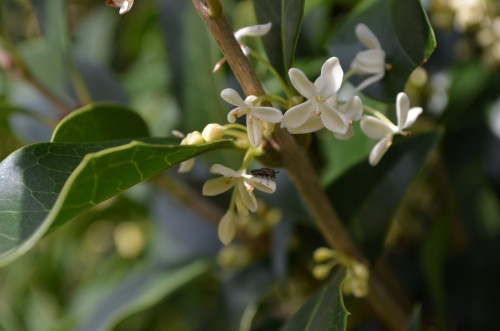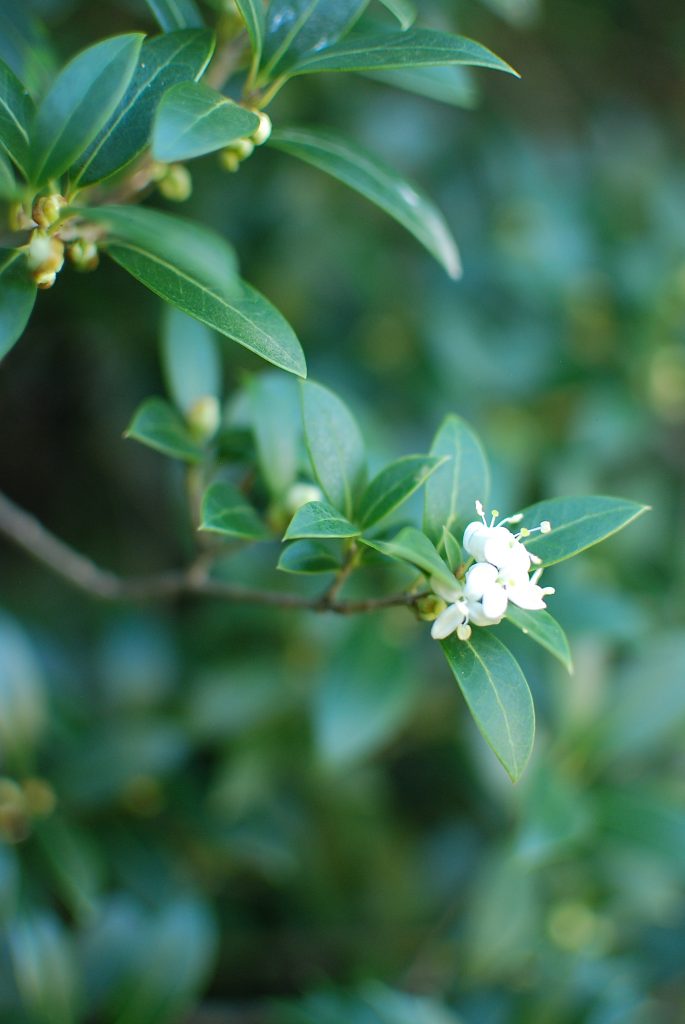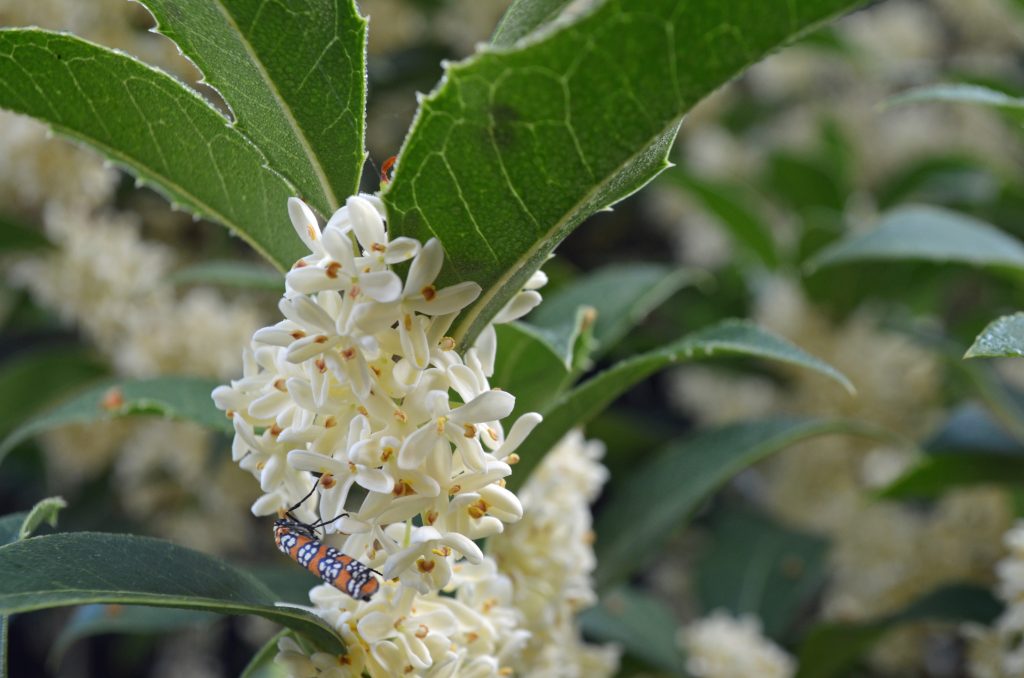Osmanthus: Planting for Fragrance
Some gardeners may call it devilwood, but the fragrance of the osmanthus shrub is nothing less than heavenly. Its tiny, creamy white flowers form clusters that emit a powerfully fragrant scent, similar to the heady fragrances produced by magnolias and gardenias. Originating in East Asia, the osmanthus was cultivated for centuries and offered as aromatic delights to their ancient gods. To this day, its cut branches are brought indoors as fragrant decoration, and its flowers are dried and used to perfume sachets and east Asian teas.

Osmanthus blooms on the 15-foot hedge at Lewis Ginter Botanical Garden. This cultivar is Osmanthus x fortunei ‘Fruitlandii’ and blooms only in fall.
It is a broadleaf evergreen, so its handsomely dense foliage of glossy or sometimes variegated leaves provides nice fall and winter interest in terms of color and form. Its fruits, which are dark blue plum-like drupes, add winter color without creating unsightly litter since they are not preferred by wildlife. In addition to serving as a specimen plant with fragrant and ornamental value, osmanthus can be planted to form natural barriers and screen hedges – literally, walls of fragrance during their blooming season. You’ll find a heavenly hedge such as this at Lewis Ginter Botanical Garden between the Children’s Garden and Grace Arents Garden. Oftentimes we get visitors who are wandering around looking for what might be giving off such a wonderful smell, never suspecting that the large hedge, 15 or more feet overhead is the culprit.
Though slow-growing, the osmanthus is usually long-lived, easy to grow and drought tolerant. It performs best in a site with full sun to light shade and is tolerant of the well-drained, clay soil commonly found in Richmond and Central Virginia. After the osmanthus is established, it usually can accept neglect due to its minimal potential for disease or pest infestation. Even pruning is optional, especially since its blooms form on old growth and its free-growing form, which is rounded and globe-like, is quite lovely in the right location.
As a member of the olive (Oleaceae) family of flowering plants, the osmanthus offers today’s gardeners more than 15 species for selection. The Osmanthus fragrans, commonly known as tea olive or sweet olive, blooms twice each year, usually around June and September. The false olive (Osmanthus heterophyllus) blooms only in autumn, as does the hybrid of these two species, Fortune’s osmanthus (Osmanthus x fortunei).
Types of Osmanthus
Don’t be confused. At first glance (see image below), the “false holly” osmanthus appears to be a member of the holly family. To differentiate, remember that the osmanthus leaves are set opposite on the stem, while the holly’s leaves alternate. Osmanthus fragrans is an old-style garden plant that is making a popular comeback in many southeastern landscapes.
Lewis Ginter Botanical Garden has nine speciman you can view. See the full collection and where they are located in the Garden by searching Garden Explorer.

